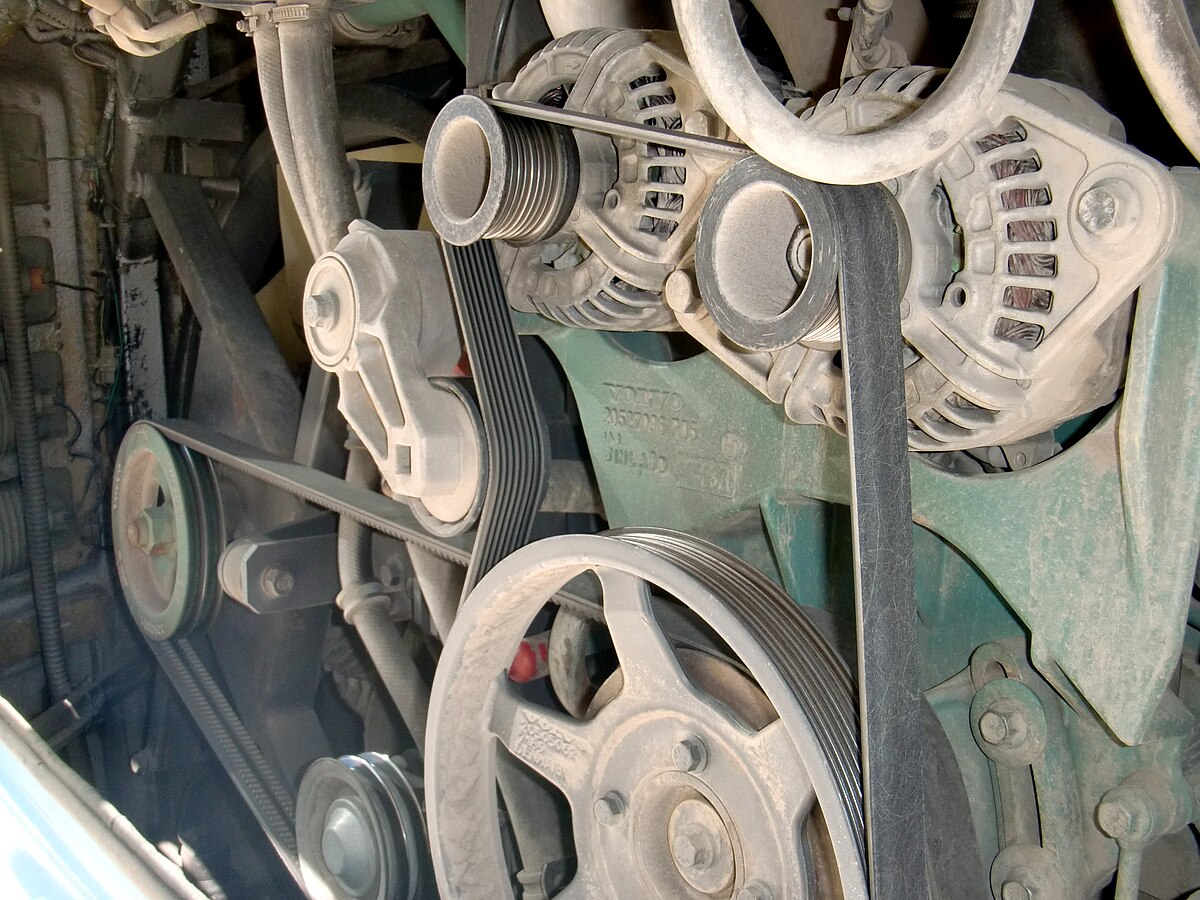The serpentine belt may keep shredding due to issues with alignment or tension. Proper maintenance can prevent this problem.
The serpentine belt plays a crucial role in the proper functioning of your vehicle. It powers important components such as the alternator, water pump, and air conditioning compressor. However, if your serpentine belt keeps shredding, it can be a frustrating and potentially dangerous issue. There are several reasons why this might be happening, including problems with alignment or tension.
In some cases, a worn-out belt or a defective pulley can also cause shredding. Whatever the root cause, it’s important to address the issue quickly to prevent further damage to your engine and to ensure your safety on the road. In this article, we’ll explore some of the common reasons that serpentine belts shred and offer advice on what you can do to prevent it from happening.

Credit: en.wikipedia.org
Common Causes Of Serpentine Belt Shredding
Serpentine belt shredding can become a pain and a potential danger for drivers. Over-tensioning and under-tensioning is a common mistake that causes the belt to shred. Misalignment can also be an issue. If the pulleys or components are worn, this can cause a problem as well.
Lastly, contamination or debris can accumulate, which can lead to damage. It’s important to keep the serpentine belt healthy, as it powers key components like the alternator, power steering pump and water pump. Regular inspection can help identify any issues early, and replacing the belt at recommended intervals can prevent costly and dangerous issues on the road.
Remember to maintain tension according to the manufacturer’s specifications and keep the engine clean to avoid contamination.
Episode No.129 – Serpentine and Drive Belts
How To Prevent Serpentine Belt Shredding
Serpentine belts are essential for the proper functioning of your car’s engine. Shredding of the belt can cause damage to other components. Proper tensioning of the belt is necessary to avoid shredding. Regular inspection and maintenance of pulleys, belt, and other components is also vital.
Dirt and debris on the engine can cause the belt to fray; thus, cleaning the engine regularly is essential. Low-quality serpentine belts can’t handle stress and wear out quickly. High-quality serpentine belts have a longer lifespan and are stronger. To prevent shredding of the serpentine belt, ensure proper tensioning, regular inspection and maintenance, keep the engine clean, and use high-quality serpentine belts.
When To Seek Professional Help
A failing serpentine belt can cause many problems. Signs of a failing belt are squealing, cracking or fraying. Expert advice should be sought if you have low battery life or experiencing overheating. Don’t attempt fixing it unless you’re an expert.
Professional maintenance is required regularly to avoid further damage. The cost of replacing a shredded serpentine belt varies depending on the extent of damage. Ignoring this problem can lead to more serious engine issues. Your mechanic can suggest repair options and preventive measures to avoid it in the future.
Therefore, it’s important to address these issues promptly to avoid potential engine damage.
Frequently Asked Questions Of Why Does My Serpentine Belt Keep Shredding
Why Does A Serpentine Belt Shred?
A belt might shred due to improper tension, worn pulley bearings, misalignment, or excessive heat.
What Happens When A Serpentine Belt Breaks?
The engine cooling system, power steering, alternator, or air conditioning might stop working. The car will also overheat.
How Do I Know If My Serpentine Belt Needs Replacing?
Check for irregular wear, cracks, or squealing noises whilst running the engine. Also, look for power steering or air conditioning failure.
Conclusion
After reading this post, you now understand the possible reasons your serpentine belt keeps shredding and how to address them. Remember to inspect the belt’s condition regularly and check for signs of wear and damage. Avoid overloading or putting excessive strain on the belt, such as using the air conditioning system excessively or driving through deep water.
Additionally, having the belt and its associated components checked and maintained by a professional mechanic can help prevent future issues. By following these steps, you can prolong the life of your belt and avoid costly repairs down the road. Thank you for taking the time to learn more about this critical component of your vehicle’s engine system, and we hope this information has been helpful in maintaining your car’s performance and safety.


